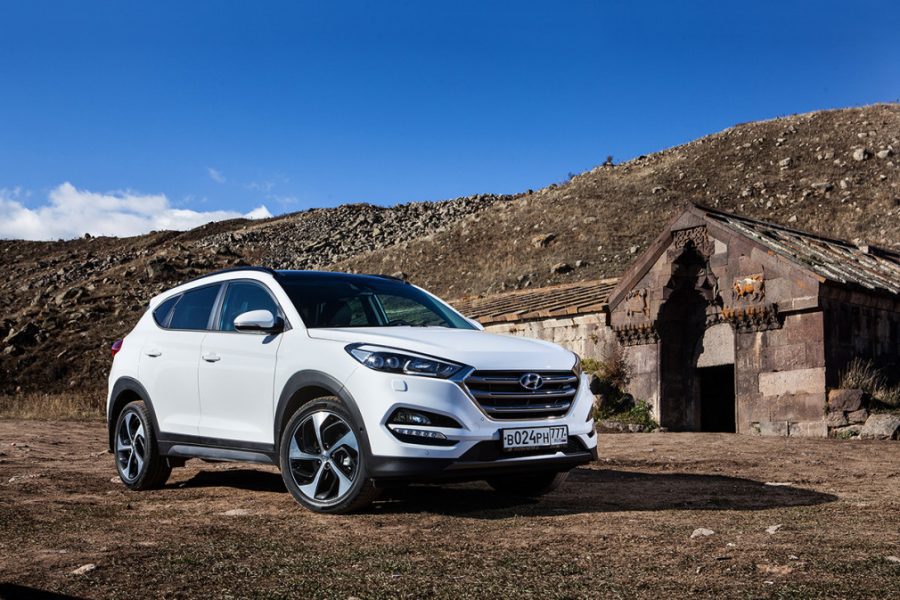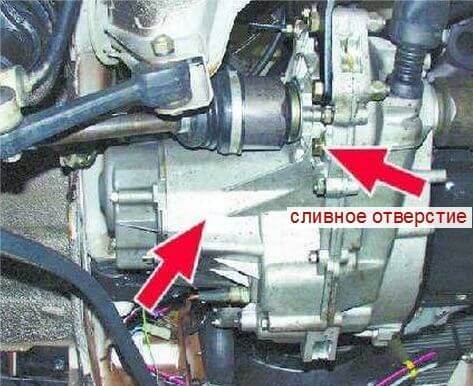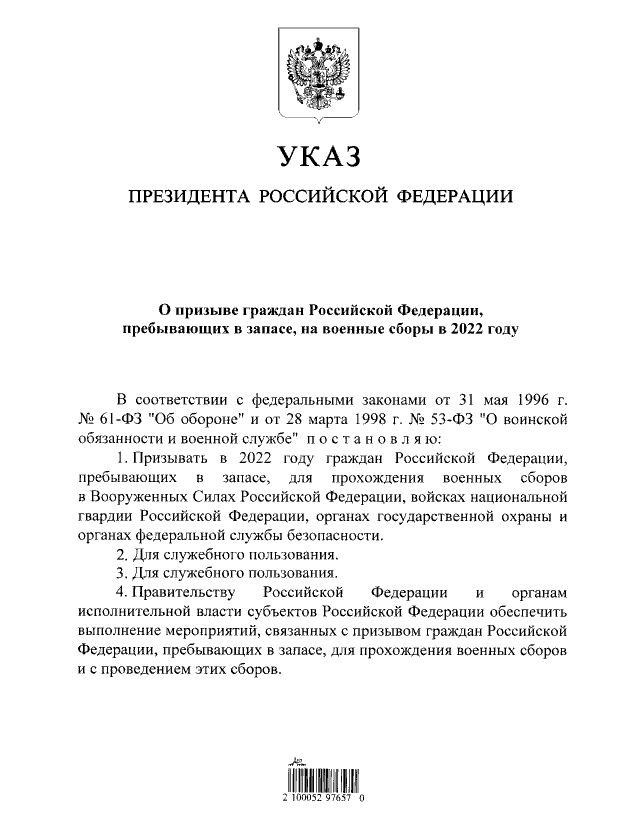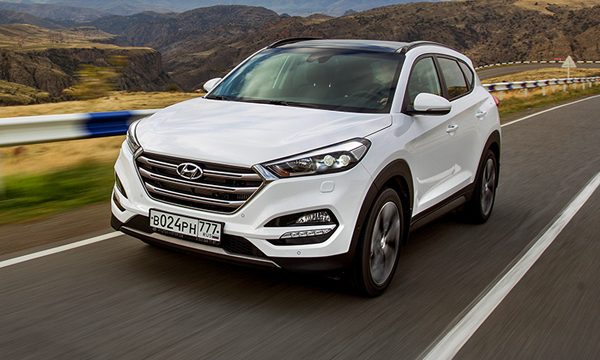
Test drive Hyundai Tucson
Mid-size crossover Hyundai returned to its original name. In addition, it was finally unified in all markets - now the car is called only Tucson around the world. With the name change, there was also some rethinking of the philosophy of the car as a whole ...
During the night, the surrounding mountains were covered with snow, and the pass to which we were supposed to go was closed. It was getting warmer every minute, the snow began to melt, streams ran along the asphalt - real spring in November. And this is very symbolic: we arrived in Jermuk on a new Hyundai Tucson crossover, the name of which is translated from the language of the ancient Aztecs as “spring at the foot of the black mountain”.
Mid-size crossover Hyundai returned to its original name. In addition, it was finally unified in all markets - now the car is called only Tucson around the world. With the change of name, there was also some rethinking of the philosophy of the car as a whole. If the first generation was aimed mainly at Asia and America, and the second one just started moving towards Europe, then the current, third generation is a global car created in the EU.
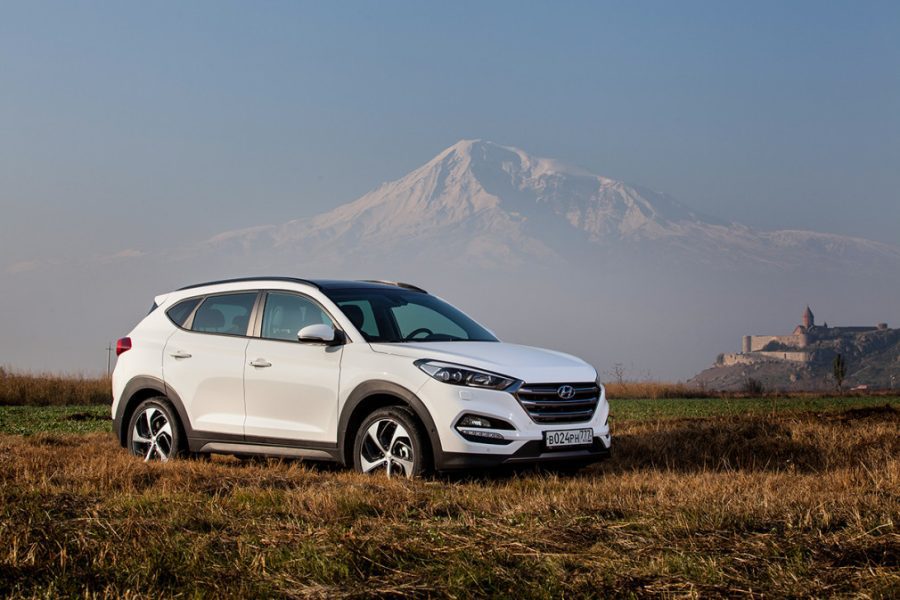
In the design of the new car, there has become much less of what is usually slightly dismissively called "Asiatic". The lines of the “fluidic sculpture” corporate identity have straightened a little, became stricter, the radiator grille now looks more massive, and this does not go against the increased dimensions of the crossover. It became 30 mm wider, 65 mm longer (30 mm of the increase falls on the wheelbase) and added 7 mm ground clearance (now it is 182 mm). Inside, it has become more spacious, the trunk has grown, and only the height has remained unchanged.
The influence of Europe can also be traced in the cabin: the interior has become noticeably stricter, perhaps even more conservative, but at the same time richer, more comfortable and of better quality. Plastic has become softer, leather dressing has become thinner. If earlier Koreans praised the presence of heated rear seats in their cars, now ventilation and electric adjustment of both front seats have been added to it - and this is in the C-class crossover.
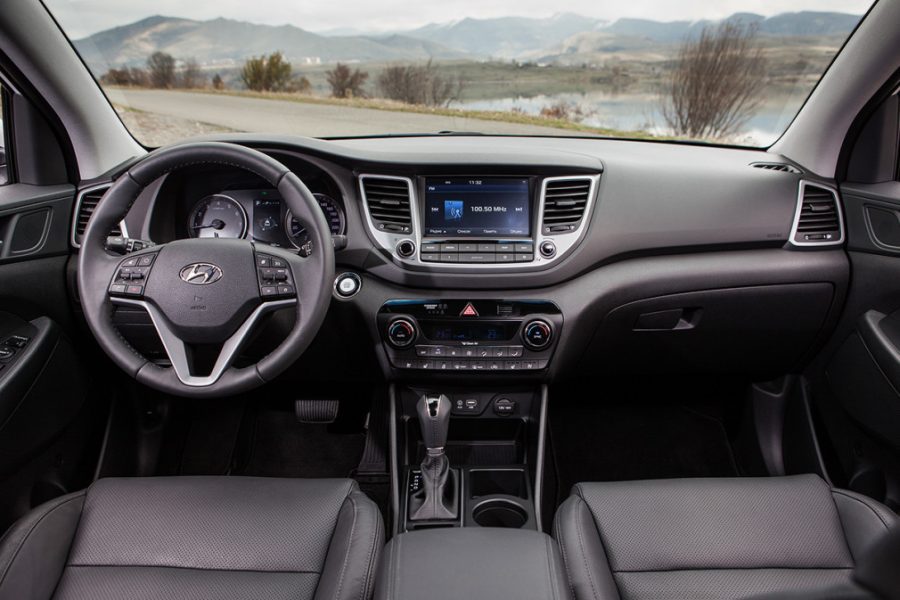
I continue to be amazed by the multimedia system with an 8-inch touch screen - the graphics are cool, it works quickly, the sound is quite decent. From such a "picture" you can expect support for "multi-touch" technology, which I immediately try to check. But it is not here, as well as support for gesture control, but you can’t blame the Koreans for this. In addition, TomTom navigation shows traffic, weather and camera alerts.
Yes, it seems that engineers have pushed almost all available technologies into Tucson, because now there is an electromechanical parking brake (which gave the car an Auto Hold system for an easy start on an uphill) and an electric power steering, which gives the crossover the ability to independently park, leave a number of cars and stay in a lane if any markings are visible on the road.
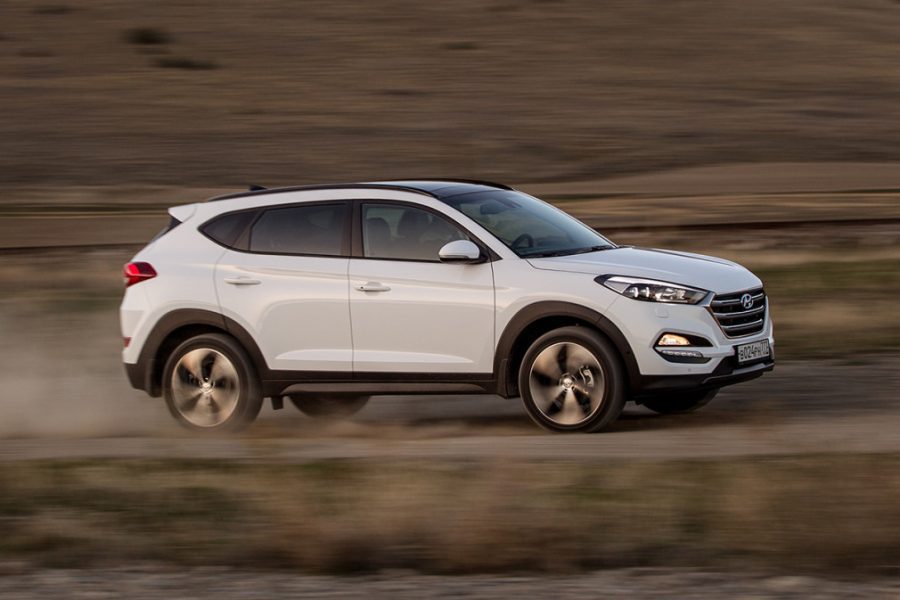
Meanwhile, Hyundai Tucson drove away from the hotel on its own and moves along the Armenian mountain serpentine, independently rotating the steering wheel. The feeling of progress is completely surreal, because a couple of years ago I saw this only on executive sedans, and here it is a mid-size crossover. And it’s so quiet in the car that everyone in the crew periodically opens their mouths and puffs out their cheeks - they check if their ears are stuffed up at a height.
Everything is in order and with a smooth ride: despite the fact that the wheels on the test cars are already 19-inch (even the younger versions have at least 17-inch alloy wheels), the road trifle is perfectly filtered by the suspension, which received new subframes, as well as new shock absorbers front and modified levers at the rear. On particularly hard bumps, the suspension often “breaks through” - this familiar problem has become less noticeable, but still has not completely disappeared.
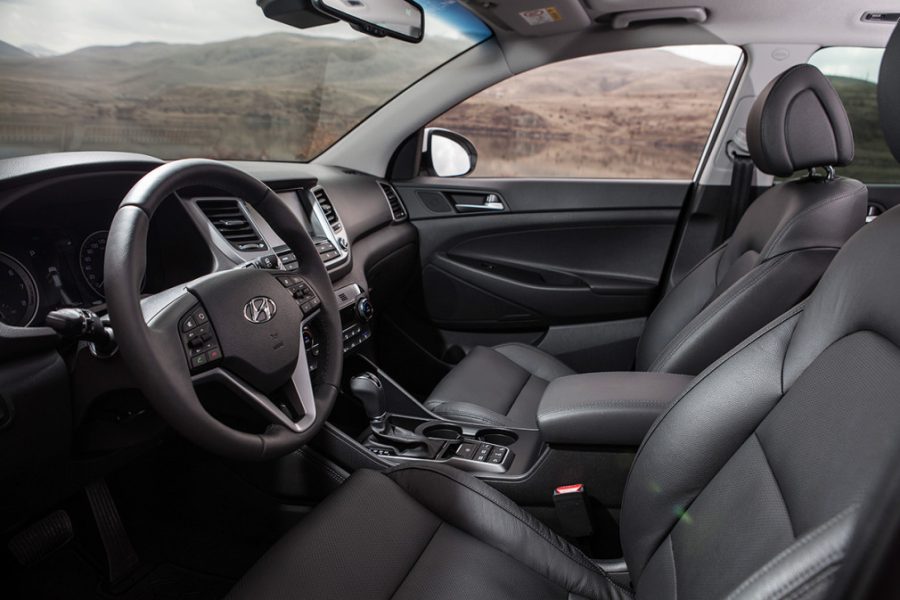
Two variants of power units were available for a test drive, and I started with the most powerful and fastest and, in combination, the most interesting - Hyundai Tucson with a 1,6 petrol turbo engine (177 hp and 256 Nm) and a seven-speed "robot" with two clutches, most of the nodes of which the Koreans developed themselves. Such a car accelerates to 100 km / h in 9,1 s, which is quite decent for the class, and thus takes the title of the most dynamic Tucson from a diesel car.
The increase in dynamics is noticeable really well, but the control of this very dynamics is sometimes lame. Everything is fine with the gas pedal, it is floor-standing and comfortable, and the connection of the motor with it is fast and transparent, but the seven-speed “robot” loves high gears and low revs so much that you don’t have time to accelerate, as seventh gear is already on the screen in the instrument cluster, and the tachometer needle floats around the 1200 rpm mark. On the one hand, if you need to sharply overtake someone on the track, it is quite expected that you have to wait until an adequate gear is engaged, and on the other hand, modern multi-stage transmissions are needed to please the driver with a figure of 6,5 liters in the column fuel consumption on the track. And for overtaking there is a sport mode.
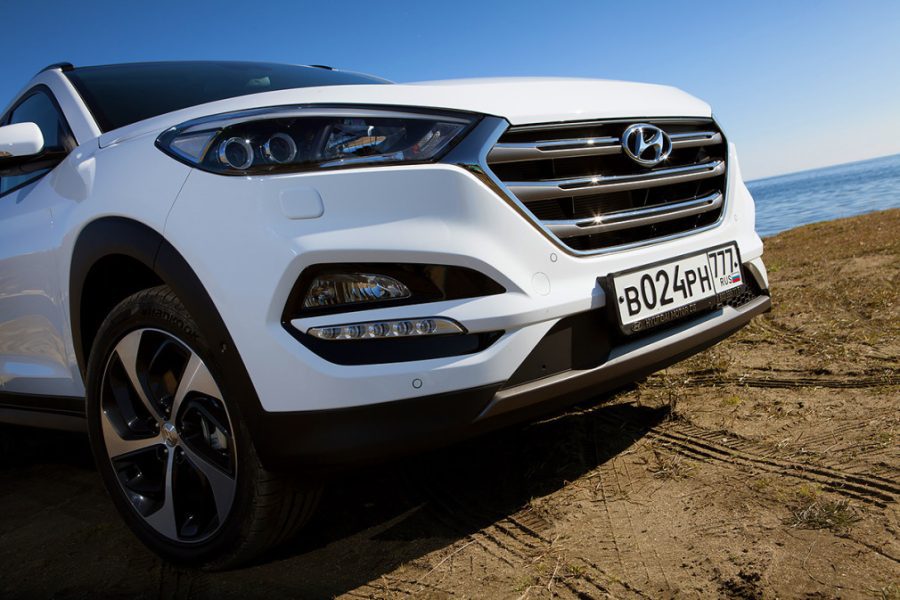
The diesel car is no longer remembered for its dynamics, which it has quite enough, but still less than that of a gasoline one. It has excellent acoustic and vibration comfort: on the go, you can easily forget that under the hood is a heavy-fuel engine. You will not feel any chirping or vibrations. The nature of such a car will differ markedly from the supercharged gasoline “four”: on the one hand, it has a large power (185 hp) and a torque of 400 Nm, which provide juicy traction, and on the other, a traditional hydromechanical “automatic” that smears reactions. The diesel car is also heavier, and the increase comes from the front, so it feels strong but heavy and therefore a little slow, while the petrol Tucson is light and nimble. Differences in the power plant do not affect the maximum speed - both here and there it is 201 km per hour.
Unfortunately, we did not manage to meet serious off-road conditions - except for broken primers, so it was possible to evaluate not so much off-road potential as comfort. At first it seemed that he was not. On the bumps, it was noticeably shaking, periodically thumping and pounding. This, of course, is frustrating, if you do not remember the completely non-off-road 19-inch wheels. With such, it is simply naive to expect a soft step. And in fact, there was nothing criminal: breakdowns were rare, and shaking was not strong in itself, but compared to cars designed for very bad roads. But with them, and with manageability, things are usually different.
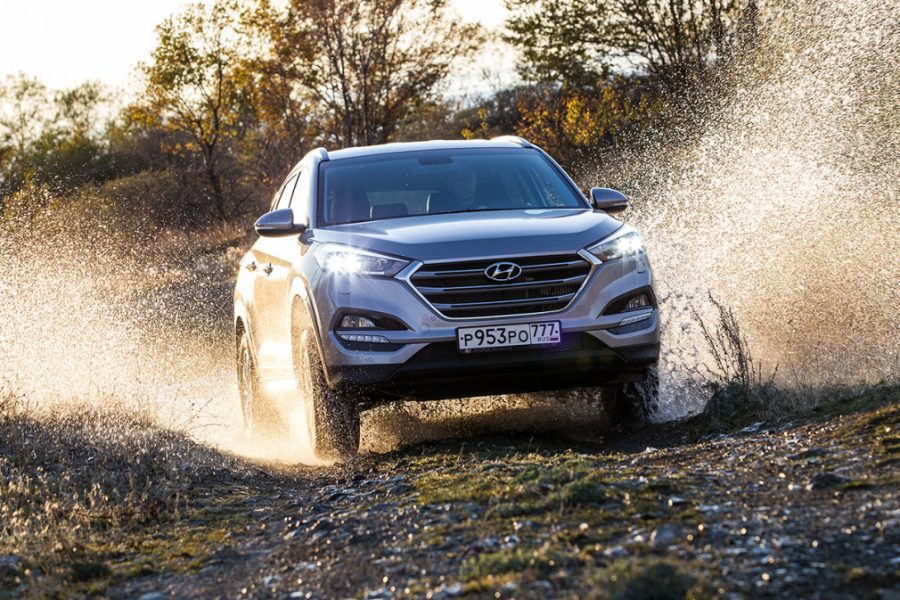
In the new Tucson, compared to the previous generation, both steering response and feedback have noticeably improved. She, if you find fault, is still not enough for a truly dynamic ride, but a step forward has definitely been made. At least the Tucson was fun on the serpentines, which is the best compliment for a crossover.
The price tag for Hyundai turned out to be not the most democratic, but it is not higher than that of most competitors: the basic version of the SUV will cost $14. For this money, the buyer will receive a car with a 683 liter engine (1,6 horsepower). Test cars are more expensive: petrol crossover – from $132 diesel – from $19. This, however, is only $689. more than for cars of the previous generation in comparable trim levels. Moreover, the entry price has become completely lower, which is a rarity these days.
